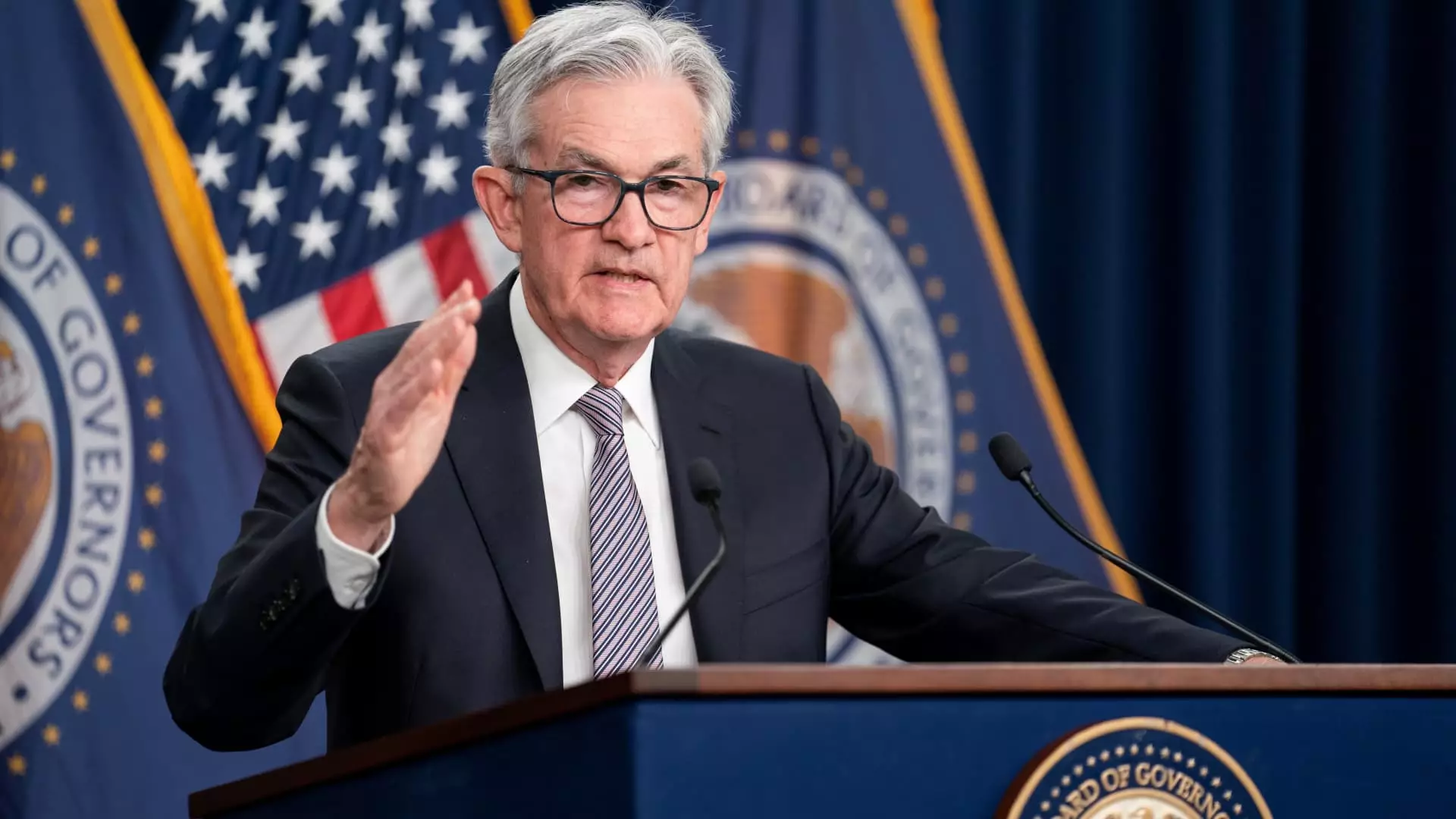The Federal Reserve has announced its decision to hold the key interest rate steady for the third consecutive time, signaling potential rate cuts in the future. Despite easing inflation rates and a resilient economy, policymakers on the Federal Open Market Committee (FOMC) voted unanimously to maintain the benchmark overnight borrowing rate within a targeted range of 5.25%-5.5%.
In addition to their decision to keep rates unchanged, committee members have projected at least three rate cuts in 2024, assuming incremental quarter percentage point reductions. While this projection is slightly lower than market expectations of four cuts, it reflects a more aggressive stance than previously indicated by officials. The decision to hold rates steady was widely expected by the markets, potentially leading to a record close for the Dow Jones Industrial Average.
The committee’s “dot plot,” which represents individual members’ expectations, reveals an expectation of four additional cuts in 2025, amounting to a full percentage point reduction. Furthermore, projections indicate three more rate reductions in 2026, potentially bringing the fed funds rate to a range of 2%-2.25%. While there is considerable dispersion in estimates for the final two years, these projections suggest a possible end to the cycle of rate hikes.
The statement released by the Federal Reserve suggests a shift towards a more cautious approach to policy tightening. The committee emphasized the consideration of multiple factors before implementing any further tightening measures. The Fed has been gradually allowing up to $95 billion per month from maturing bonds to roll off its balance sheet, and there have been no indications of curtailing this process.
Inflation, which spiked to a 40-year high in mid-2022, has since eased, much to the relief of Fed officials. Chair Jerome Powell emphasized the positive news during a news conference, stating that inflation had “eased over the past year.” The committee still described prices as “elevated” but projected a decline in core inflation to 3.2% in 2023, 2.4% in 2024, and a return to the 2% target in 2026. Economic data from November indicated little change in both consumer and wholesale prices, bringing the Fed closer to its inflation target.
The statement acknowledged a slowdown in economic activity, contrasting with the previous announcement of “expanded strong pace.” Powell affirmed during the news conference that recent indicators suggested a substantial slowdown from the outstanding growth in the third quarter. However, GDP is expected to expand by approximately 2.5% for the year as a whole. The committee’s projections anticipate GDP growth to accelerate at a 2.6% annualized pace in 2023, with a 1.4% forecast for 2024. Unemployment rate projections remain largely unchanged, at 3.8% in 2023 and an increase to 4.1% in subsequent years.
Considerations and Political Impact
The Federal Reserve has emphasized its readiness to hike rates again if inflation becomes a concern. Nevertheless, officials have expressed a patient approach as they monitor the impact of previous tightening measures on the economy. Persistently high prices have taken a toll on President Joe Biden’s approval rating, with negative sentiment surrounding his handling of the economy. Speculation arose that the Fed might be reluctant to implement significant policy actions during a presidential election year in 2024. However, given the current high real rates (the difference between the fed funds rate and inflation), the Fed would be more inclined to act if inflationary data continues to cooperate.
The Federal Reserve’s decision to hold interest rates steady reflects cautious optimism about the economy. While projections suggest future rate cuts, there is still uncertainty about the timing and magnitude of these reductions. With inflation easing and economic growth moderating, policymakers are treading carefully to strike the right balance between supporting the economy and preventing overheating. As the economy evolves, the Federal Reserve remains steadfast in its commitment to monitor key indicators and adjust policy accordingly.

Leave a Reply